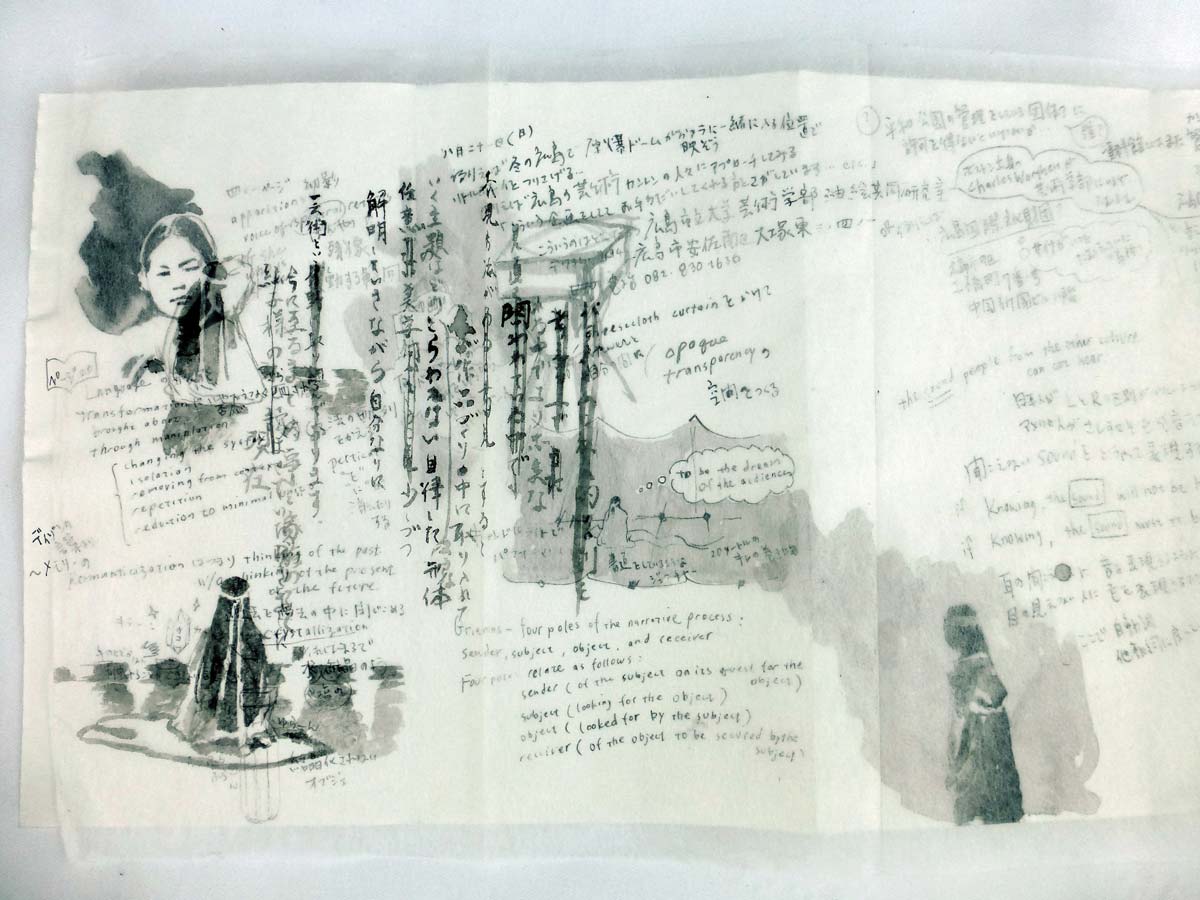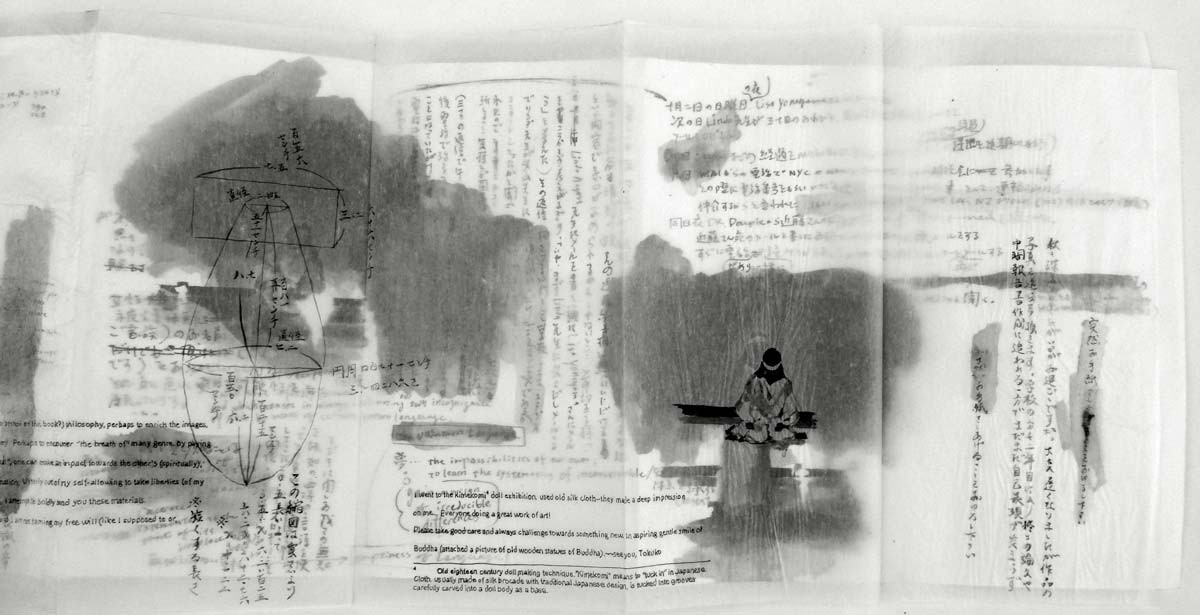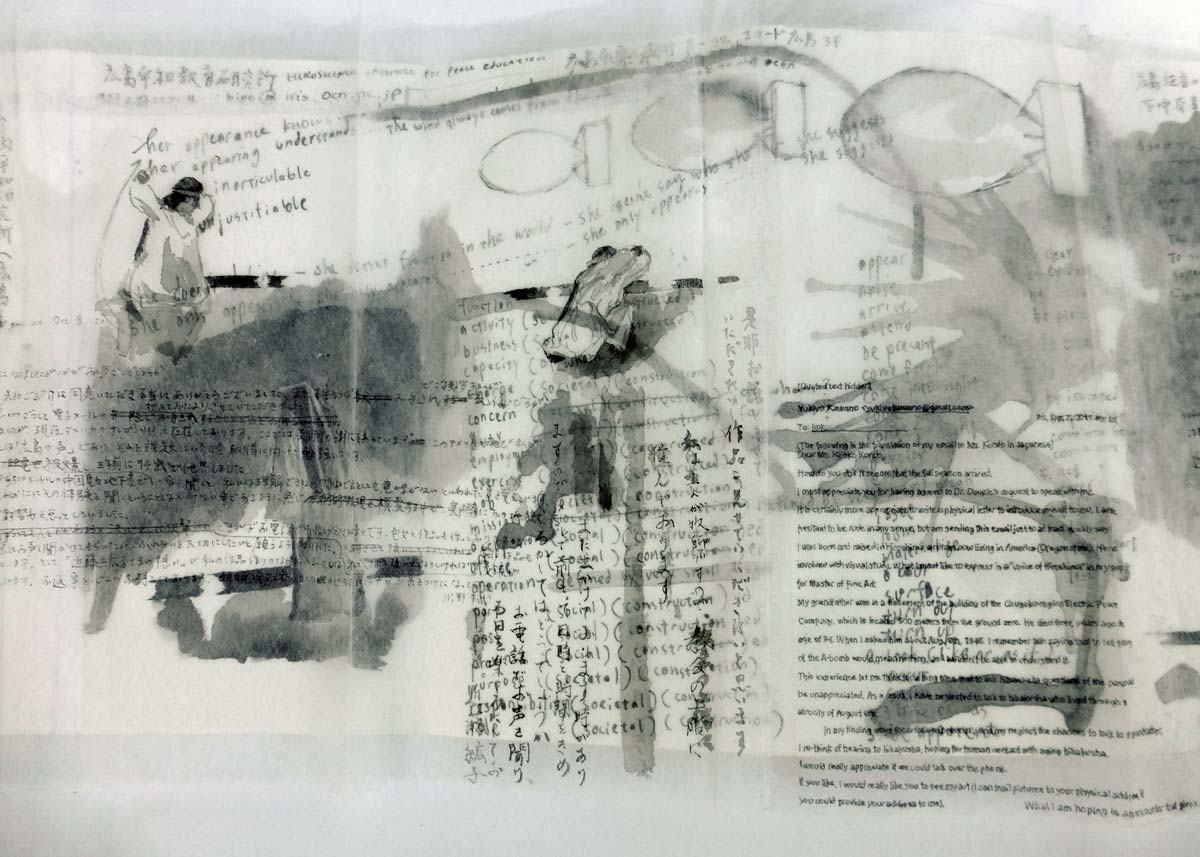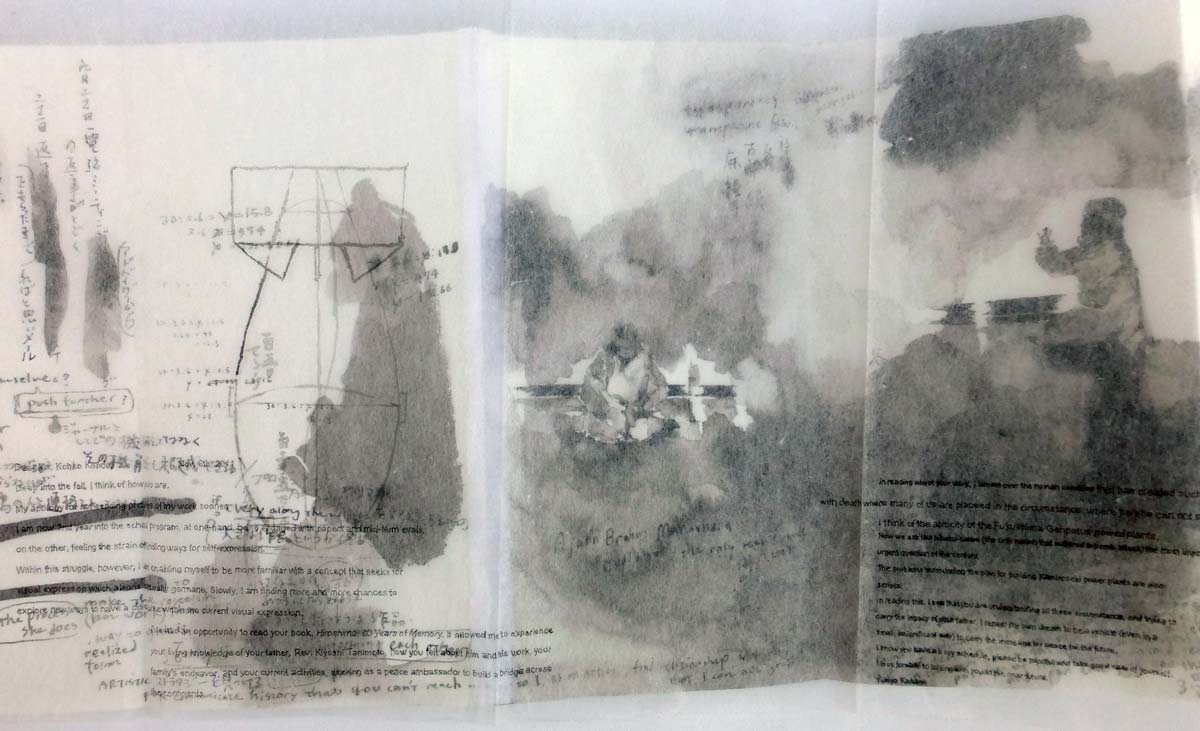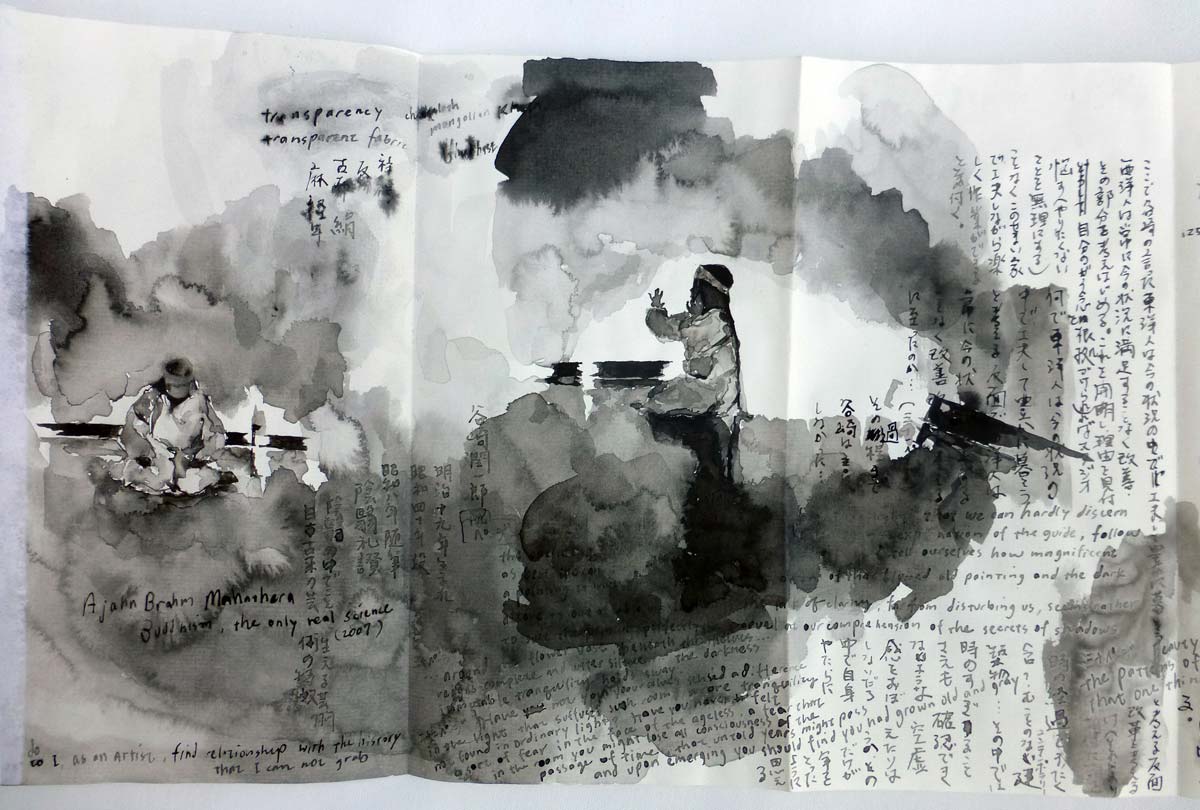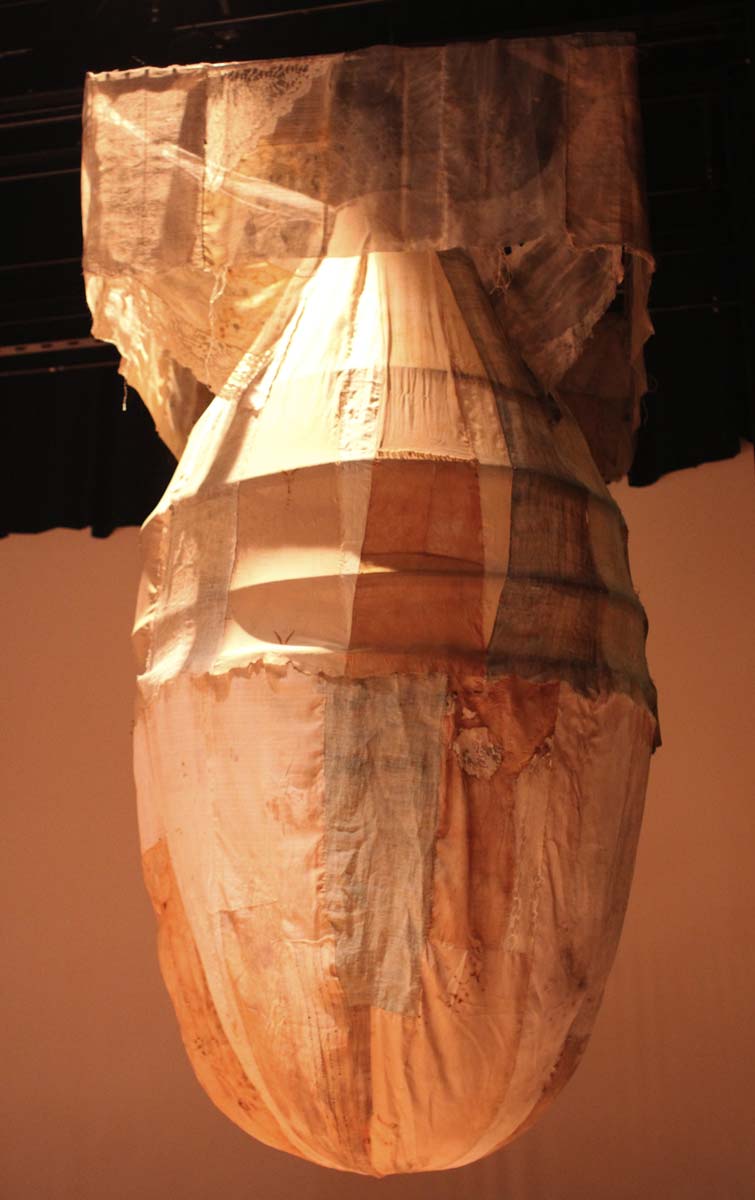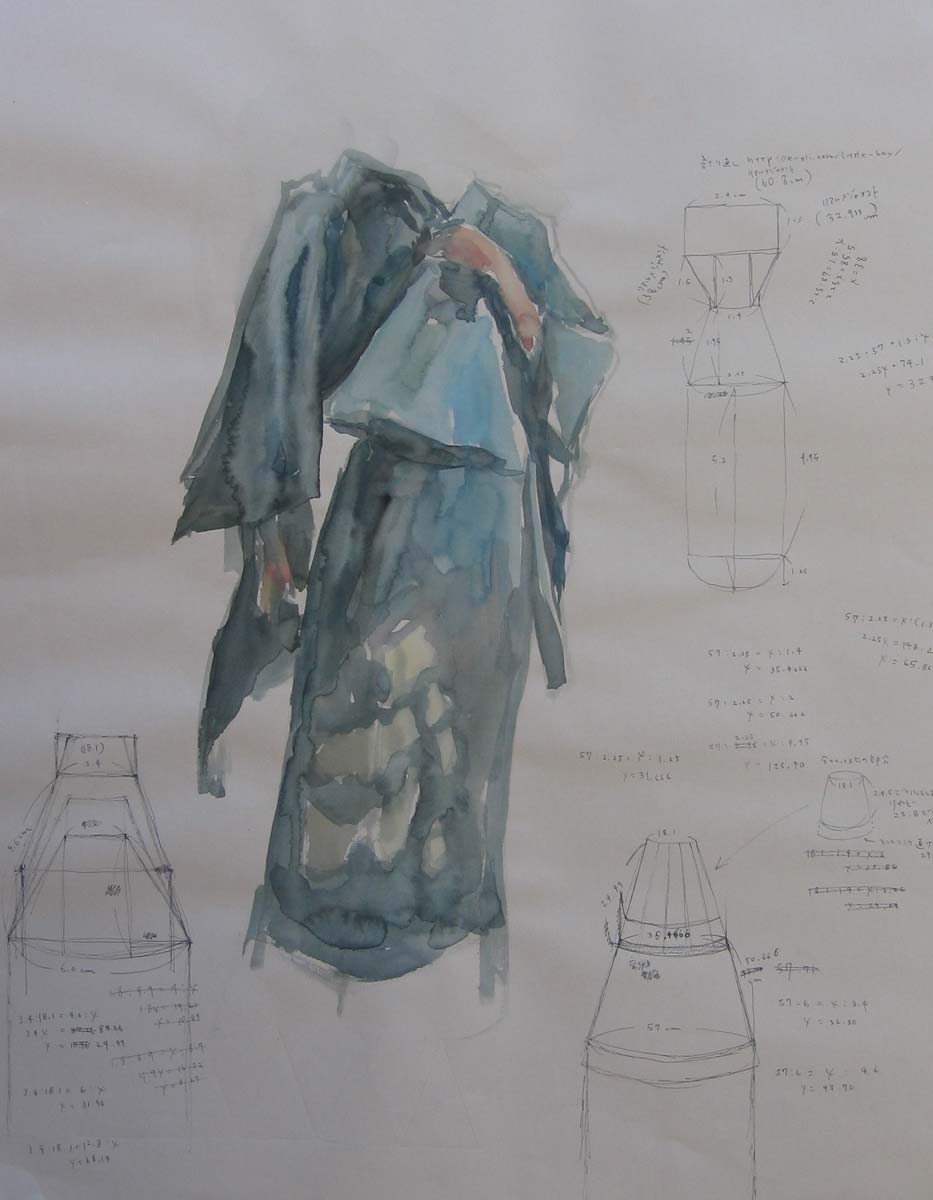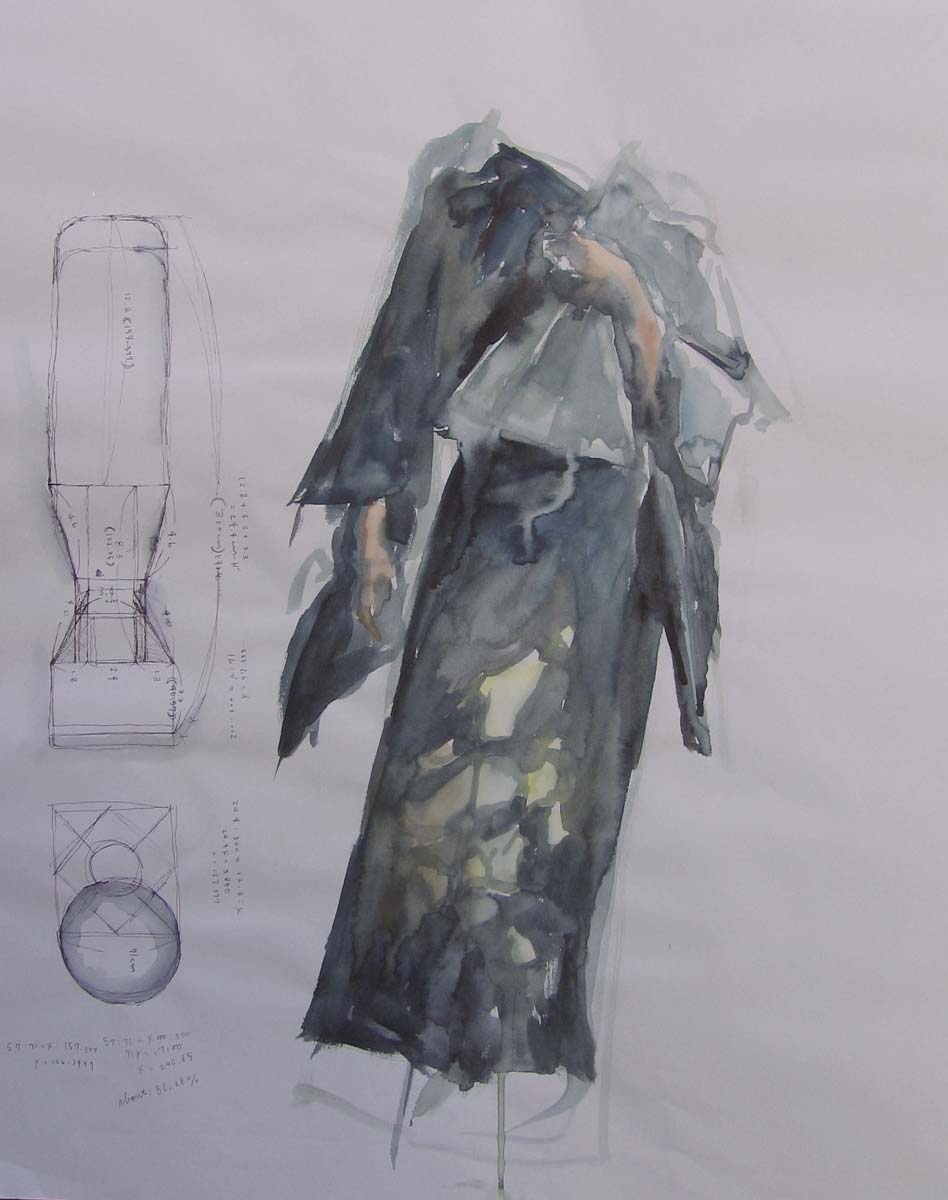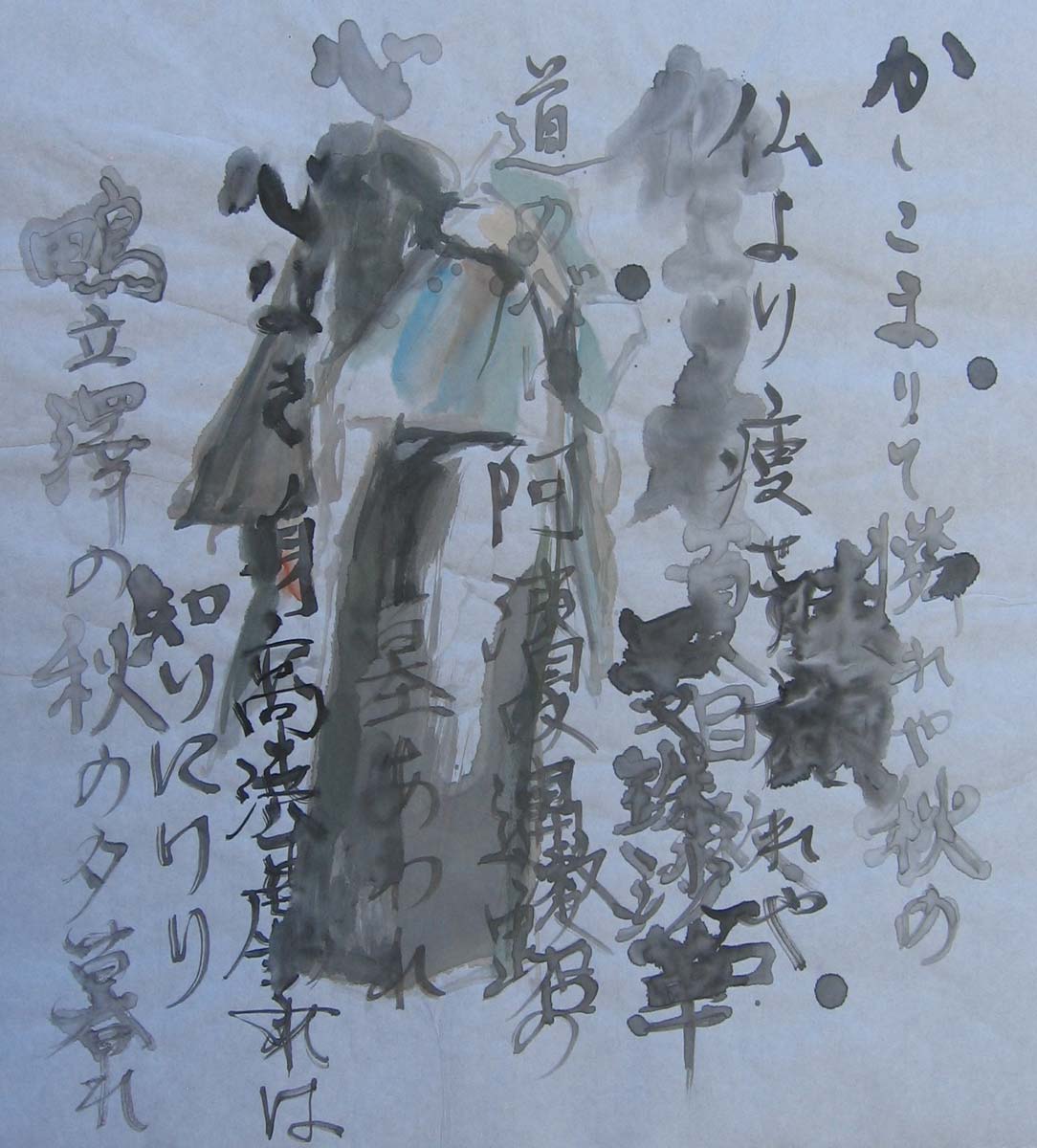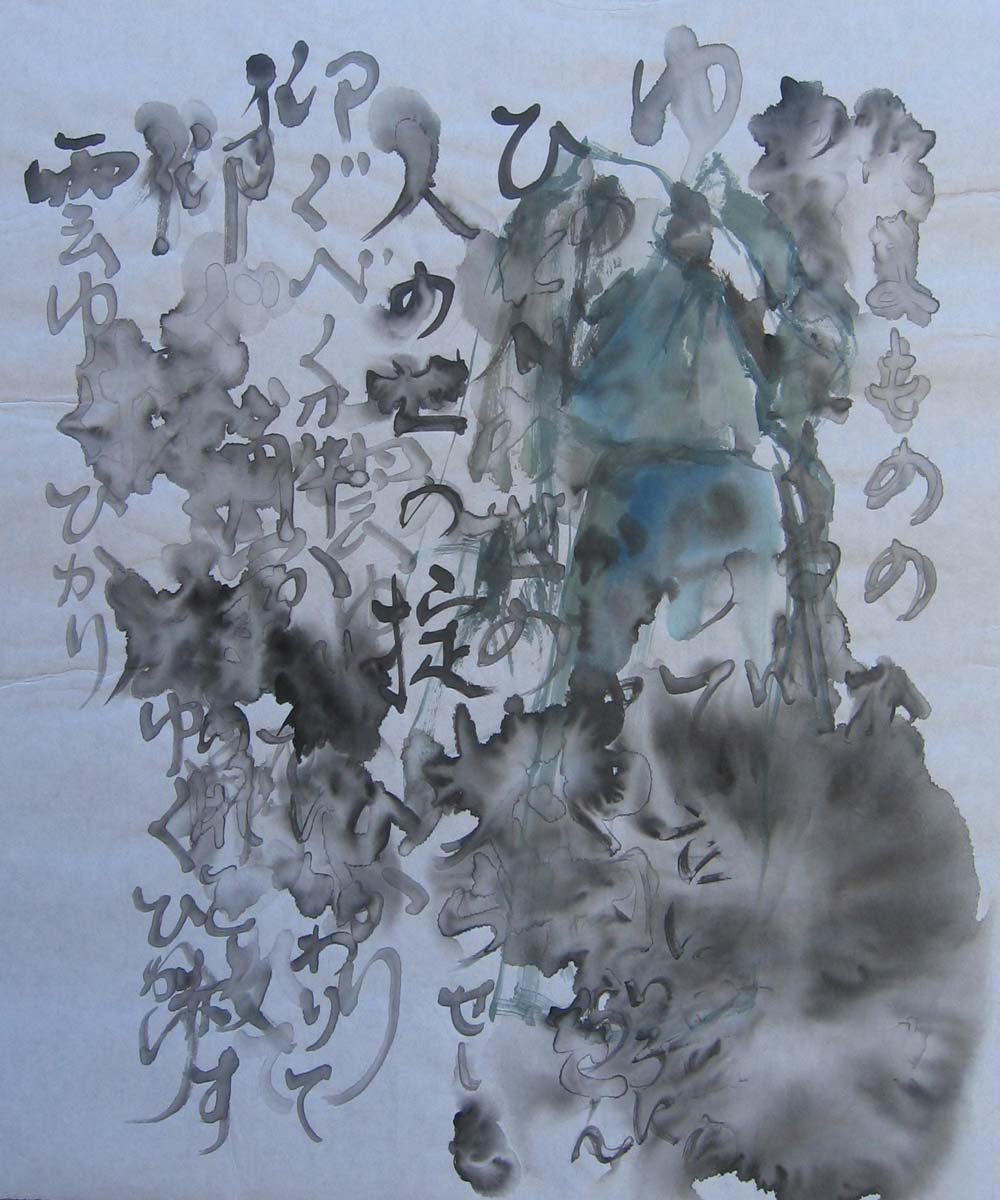[scroll left to right]
The bomb dropped on Hiroshima on August 6, 1945 was a gun-shaped uranium bomb. This bomb was called Little Boy.
The bomb dropped on Nagasaki in August 9, 1945, was an implosion-type plutonium bomb. This bomb was called Fat Man.
The subject is suspended in mid-air and made of tanmono silk and momen from a kimono, with Japanese hair woven into it.
Aunt Shoko sneakily handed me this kimono on my trip back to Hiroshima. I dream of grandmother putting this on, a rather provocative kimono that shows her iki, an intricate allure. Cyan blue, it is the color of Shinbashi-iro, as in Shinbashi, Tokyo, the red-light district before the war.
Seventy years later, I re-traced the hand stitching of Grandmother, with a seam ripper between fingers, feeling “Mono no aware,” a gentle sadness, a wistfulness, reflecting on the ephemera of things.
As kimono patterns are freed from the conformity of the perpetual folding, suddenly there emerged the original long tanmono pieces outside of time. Being erased, they resembled something else. A different hue. A shadow. And within its repetitiveness, in the foreboding darkness, a new shape—that of the atomic bomb. Its weightlessness juxtaposes with the power of distraction by the gravity of the subject.
It has become a ritual-like practice, almost passive or unconscious. Of forgetting nothing, leaving out nothing.
Uranium bomb
Kimono of Cyan Blue
a gentle sadness
A thread of hand stitch
act of undoing realizes
foreboding darkness
te-nui ito
hodo-ke-shi ki-oku
hito no kage
whisper in the wind
made of Shinbashi-iro color
the atomic bomb
kaze soyo-gu
shinbashi-iro no
Gen-shi dan
